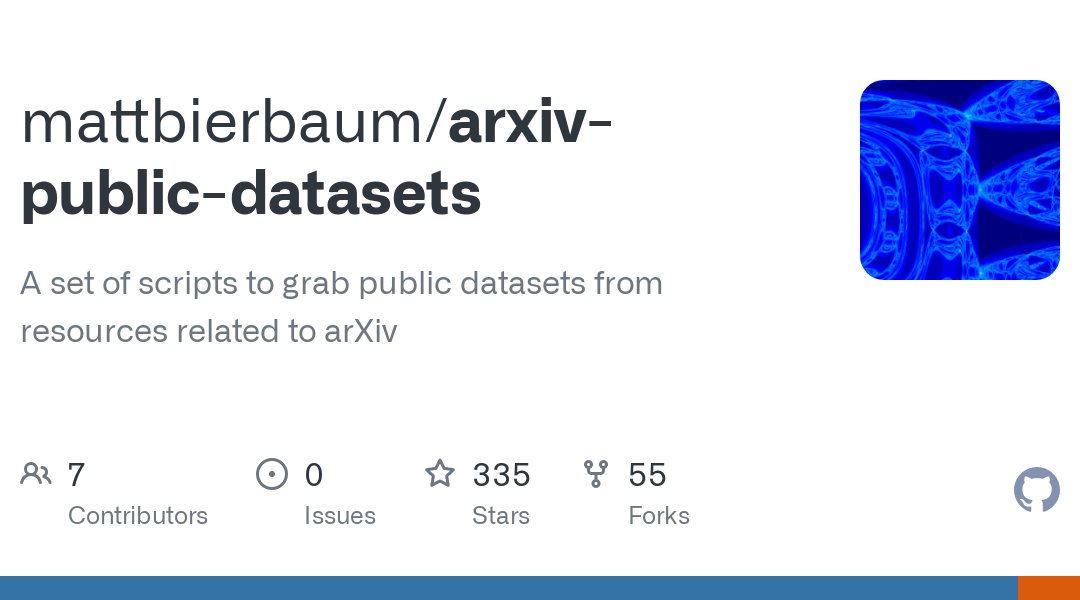
GitHub – mattbierbaum/arxiv-public-datasets: A set of scripts to grab public datasets from resources related to arXiv
{{ message }}
This commit does not belong to any branch on this repository, and may belong to a fork outside of the repository.